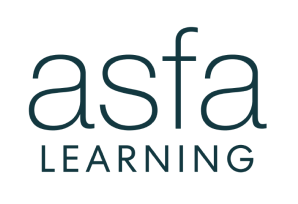23 May 2019
Rising costs hit retirees
The ASFA Retirement Standard March quarter 2019 figures indicate that couples aged around 65 living a comfortable retirement need to spend $61,061 per year and singles $43,255, up 0.1 and down 0.1 per cent respectively on the previous quarter. At the modest level there was no increase for singles and a 0.2 per cent increase for couples.
The quarter on quarter costs were up around 1.3 per cent for couples at both the comfortable and modest levels, in line with overall movement in the All Groups CPI. Budgets for older retirees rose from the previous quarter by around 0.3 per cent at the comfortable level and by 0.4 per cent at the modest level.
“While for many, the overall cost of retirement was largely unchanged over the most recent quarter, prices have been going up at a greater rate for a number of items,” explained Dr Martin Fahy, CEO, Association of Superannuation Funds of Australia (ASFA).
“The relatively low rate of inflation has brought interest rates for bank deposits to historical low levels, placing pressures on the household budgets for retirees relying on income from term deposits and similar investments,” he said.
For couples aged 65 and over, the average bank account balance was around $90,000 with an average housing loan only $14,000. The great majority of those aged over 65 have no mortgage or only a low amount owing. Interest rate movements have been less favourable for such households.
Average term deposit rates for a three-year term were 2.7 per cent back in May 2015 but they are down to 2.3 per cent now. On a $200,000 term deposit this leads to $800 less income a year.
While the overall rate of inflation was relatively low, some costs grew strongly. More specifically:
- Medical and hospital expenses rose by 1.3 per cent in the March quarter and by 4.1 per cent over the last year
- The current drought and associated increases in production costs have put upward pressure on food costs in the March quarter, with the price of vegetables up 7.7 per cent, up 2.9 per cent for poultry, 1.8 per cent for bread and 1.8 per cent for fruit. Over the last year the price of food and non-alcoholic beverages rose by 2.3 per cent on average.
The most significant price falls in the March quarter were automotive fuel (-8.7 per cent), domestic holiday, travel and accommodation (-3.8 per cent) and international holiday, travel and accommodation (-2.1 per cent).
Table 1: Budgets for various households and living standards for those aged around 65 (March quarter 2019, national)
| Household type | Single Modest | Couple Modest | Single Comfortable | Couple Comfortable |
|---|---|---|---|---|
| Housing – ongoing only | $99.39 | $111.73 | $116.41 | $121.69 |
| Energy | $37.59 | $50.48 | $47.62 | $59.05 |
| Food | $91.09 | $168.87 | $117.77 | $204.69 |
| Clothing | $20.08 | $38.16 | $26.82 | $49.95 |
| Household goods and services | $33.25 | $39.09 | $73.01 | $89.96 |
| Health | $48.78 | $94.04 | $100.05 | $187.17 |
| Transport | $86.91 | $92.89 | $141.80 | $153.90 |
| Leisure | $93.67 | $146.86 | $181.58 | $272.65 |
| Communications | $18.85 | $21.23 | $23.57 | $30.68 |
| Total per week | $529.61 | $763.36 | $828.63 | $1,169.75 |
| Total per year | $27,646 | $39,848 | $43,255 | $61,061 |
Table 2: Budgets for various households and living standards for those aged around 85 (March quarter 2019, national)
| Household type | Single Modest | Couple Modest | Single Comfortable | Couple Comfortable |
|---|---|---|---|---|
| Housing – ongoing only | $99.39 | $111.73 | $116.41 | $121.69 |
| Energy | $37.59 | $50.48 | $47.62 | $59.05 |
| Food | $91.09 | $168.87 | $117.77 | $204.69 |
| Clothing | $20.08 | $38.16 | $26.82 | $49.95 |
| Household goods and services | $51.10 | $73.24 | $149.55 | $179.22 |
| Health | $83.90 | $117.60 | $139.47 | $220.47 |
| Transport | $40.20 | $50.25 | $45.23 | $55.28 |
| Leisure | $59.45 | $84.96 | $123.68 | $172.61 |
| Communications | $18.85 | $21.23 | $23.57 | $30.68 |
| Total per week | $501.65 | $716.53 | $790.13 | $1,093.64 |
| Total per year | $26,186 | $37,403 | $41,245 | $57,088 |
The figures in each case assume that the retiree/s own their own home and relate to expenditure by the household. This can be greater than household income after income tax where there is a drawdown on capital over the period of retirement. All calculations are weekly, unless otherwise stated. Annual figure is 52.2 times the weekly figure.
More information
Australians can find out more about superannuation on the independent Super Guru website, where ASFA provides individual calculators to help Australians plan for retirement.
For further information, please contact:
Katrina Horrobin, 0451 949 300.
About ASFA
ASFA is the peak policy, research and advocacy body for Australia’s superannuation industry. It is a not-for-profit, sector-neutral, and non-party political, national organisation. ASFA’s mission is to continuously improve the superannuation system, so all Australians can enjoy a comfortable and dignified retirement.



